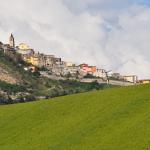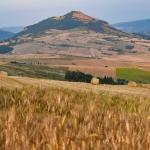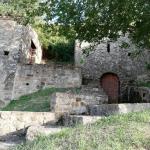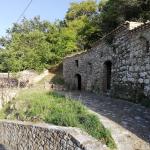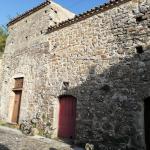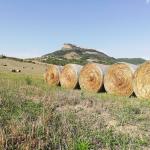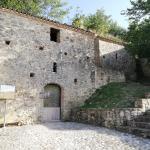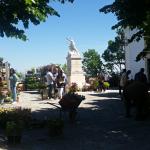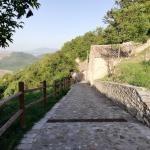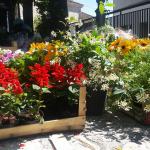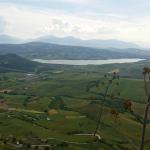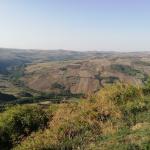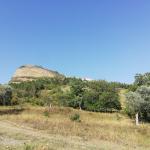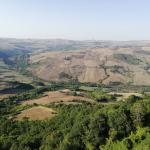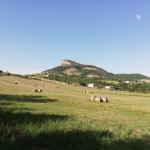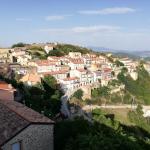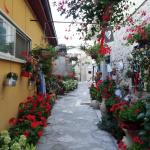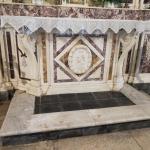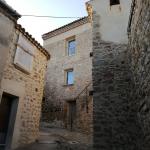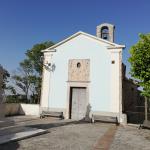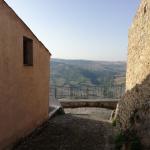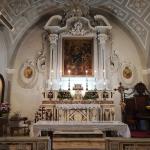The Municipality of Cairano is located in the Upper Irpinia area. It's a village with 298 inhabitants, located 770 metres above sea level, at 70 km from Avellino. The small territory is located in the centre of the natural communication route between the Ofanto Valley and that of the Sele river and extends for 13.81 sq km. The neighbouring municipalities are: Andretta, Calitri, Conza della Campania and Pescopagano.
The etymology of the name comes from Car-janus (which means "mount of Giano"), which turned into Castellum Carissanum in the Roman era and then Cairano since 1500, as from the geographical maps of the Vatican completed in 1585. The inhabitants are called Cairanesi and Saint Leo the Great is their patron saint.
PLACES OF INTEREST
- Rupe (Cliff) - A place that offers an enchanting view of the Irpinia landscape, to be contemplated with the delicate sound of wind organs
- Church of San Leone Magno (Saint Leo the Great) - Chapel dedicated to the patron saint in 1727, with portal and altar in polychrome marble
- Church of the SS. Immacolata Concezione (Immaculate Conception) - Church with precious marble altar and painting dating back to the 18th century
- Underground cellars - Entire district with caves used as cellars, of archaic origin
- Castle ruins - Visible from the top of the hill, there are the remains of a castle dating back to 1096 and called "Castellum Cariussanum"
- Archaeological Site of Collina del Calvario - Archaeological site dating back to the Iron Age, in which numerous remains have been found, some of which are kept in the Irpino Museum in Avellino
- Church of San Martino Vescovo (Saint Martin of Tours) - Mother Church of the village, it houses art works of the 16th century, such as the canvas of "Madonna and child"
- Historic Centre - Characteristic urban structure of the medieval village, well preserved, with stone portals
- Marchesale Mazzeo Palace - Also known as Former Marchesi Garofalo Palace, it dates back to the 18th century
- Civic tower - Built in the 19th century, it was built with square stones
- Noble palace of the Amato family - Historic palace of the 18th century, with a small chapel where Saint Gerard Majella was a guest
- Relazioni Felicitanti museum - Art installations by the master Giovanni Spiniello, with an interactive multimedia museum under construction, called "Soldier's tomb" (10th-9th century BC), and experiential stories
- Naturalistic path - Trekking path traced by the CAI
EVENTS
- Cairano 7X - Festival of art and visionariness to promote the beauty of the village
- SponzFest - Festival with artistic direction by Vinicio Capossela, in partnership with the Municipality of Calitri (leader)
- Masterclass of crafts and performing arts - Training and performance event directed by Franco Dragone
- Recupera Riabita - Cultural event-seminar on small towns and inland areas
- Borgo Fiorito - Summer event characterized by artistic flower creations in public and private spaces of the village
- Wine factory - Innovative-experimental winemaking project with archaic techniques in underground cellars
- Feast of Saint Leo the Great - Religious celebrations in honour of the patron saint, scheduled for the first Sunday in June
- Feast of Saint Gerard Majella and the Sacred Heart of Jesus - Feast held on the 23rd and 24th of September
- Fusilli festival- Food and wine tasting of local products, scheduled between August and September
- Cingul’ e Sauzicchj’ Festival - Food and wine event, with delicious artisan dishes and wine tasting
TYPICAL FOOD AND PRODUCTS
- Caciocavallo irpino di grotta PAT - Spun curd cheese, produced with milk from small and medium-sized farms, mainly from brown cattle, traditionally aged in caves
- Caciocavallo Silano PDO - Semi-hard cheese, with spun curd, produced with milk from different breeds of cows, including Podolica
- Cinguli di San Martino - homemade pasta with tomato sauce
- Wines - Handcrafted products in the historic underground cellars
FUN FACTS
In 1963, in Cairano, the feature film "La donnaccia" was shot, based on the texts of Camillo Marino and Giacomo D'Onofrio, leading intellectuals and creators of Laceno d'Oro: the film saw the participation of numerous locals, involved as extras or in small roles to interpret themselves, in pure neorealist style.
Franco Dragone, famous director of movies and of the Cirque du Soleil, one of the greatest creators of shows in the world, is a native of Cairano and often returns to his town of origin, organizing artistic and cultural initiatives.
A unique work was installed on the cliff of the town: a pipe organ that produces a sound determined by the passage of the wind inside it.
The famous singer-songwriter of Irpinian origins, Vinicio Capossela, has dedicated the book "Il Paese dei Coppoloni" to this town.
HISTORICAL NOTES
The Cairano territory has favoured human settlement since the Iron Age, evidence confirmed by interesting archaeological findings.
It's an ideal strategic position of communication between the Ofanto Valley and that of the Sele river, as well as a union between the Adriatic and Tyrrhenian coasts. For this reason, it became a military garrison during the Roman era, in defence of a very precious colony in Conza known as Castellum. Also in the Lombard period, Cairano assumed the role of military Castrum, in defence of the valleys below. The archaeological finds brought to light in the Vignale, Serra and Cannelicchio localities have identified settlements and necropolises that date back to the beginning of the 9th to the 6th century BC and which belong to the so-called "Oliveto-Cairano" culture. The necropolis are unique, characterized by pit tombs, the oldest tombs of this type found in Campania.
The land of Cairano is mentioned in several writings: the first historical mention is due to Pliny the Elder in the book II-57 of his Naturalis Historia. Later, it was found even in Caesar's De Bello Civile and in the bull sent by Pope Urban II to Archbishop Alfanus of Salerno in 1096. It is also known that Cairano, with the advent of feudalism and until 1679, served as the fortress of the fief of Conza, becoming an independent fief in 1676.
This town with an agricultural vocation, has undergone a progressive process of depopulation after the Second World War.
Come and feel the magic of Cairano, the wind organ, placed as a sentry on the cliff, whispers today and will rage tomorrow, with powerful music that wants to be deciphered
Cairano
Via Roma, 1, 83040 Cairano AV, Italia
Events
On 7 July 2023 in Cairano the photographic exhibition dedicated to the artist director and…
On 30 September 2023, images, voices, dance and art actions to pay homage to director Irpino
On August 3, 2024, a delightful appointment with food and wine traditions
-
On 9 and 10 August 2024 a unique and immersive experience, the perfect union between taste and…
Did you like it? Leave a review
Your opinion is important! It will be visible after approval by the editorial staff.
To post a comment you must be an authenticated user. Log in with Social Login
